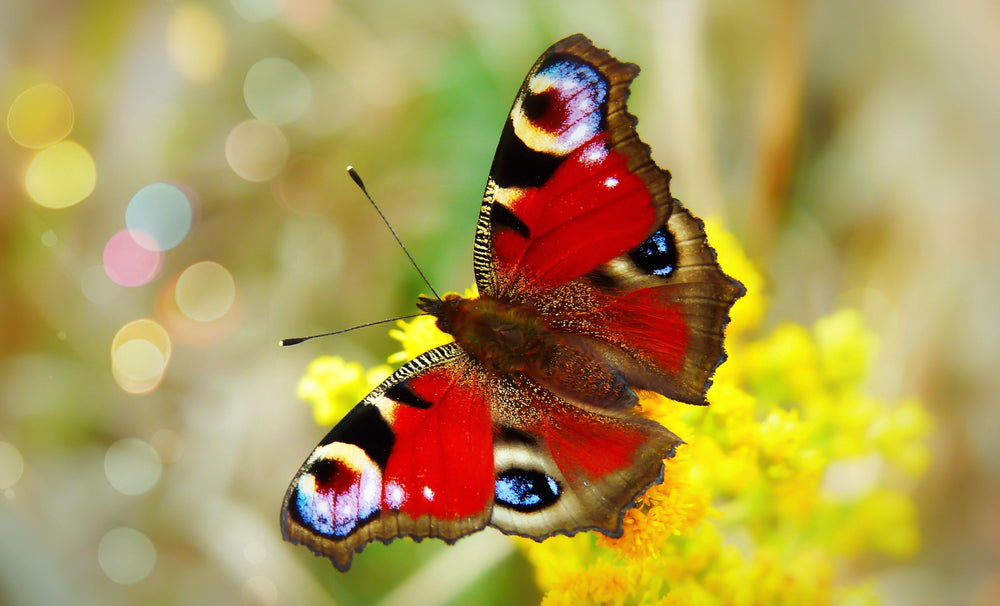News
10 Best Plants for Attracting Wildlife to Your Outdoor Garden

Your outdoor garden is so much more than a collection of plants. It’s a living landscape with potential to house a beautiful array of local birds, mammals and pollinating insects. Don’t worry if you have no access to a large scale outdoor garden. Even a small pot filled with flowering plants will make a huge difference for tiny insects. A big part of being a wildlife gardener is choosing the right plants to attract these wonderful creatures, especially threatened wild insects. Here are the 10 best plants you can grow in your indoor smart garden and later transplant outdoors. In no time at all your garden can become a beautiful sanctuary for nature. As most of them are perennials, they will become a valuable food source for many years.
1. Basil
If you allow your basil to flower outdoors, its blossoms can attract insects and pollinators that are super helpful for your garden. Flower flies, in particular, often visit basil blossoms and compete with each other for a sip of nectar! Choose from a wide variety of basils in our collection including classic sweet basil, cinnamon basil, dwarf basil, holy basil, Thai basil and lemon basil.
2. Garden Sage
Sage is especially popular with leafcutter bees and long-tongued species such as the bumblebee. Butterflies also happen to love sage’s nectar. When your sage eventually begins to downgrade (approximately 85 - 90 days after planting), we highly recommend transplanting it outdoors. It will still look beautiful in your garden while providing a home for wildlife.
3. Hyssop
Hyssop is frequently used by beekeepers to produce rich, aromatic honey. If transplanted outdoors (approximately 91 - 100 days after planting), your Click & Grow hyssop’s deep flowers can attract longe-tongued species such as wool carder bees and bumblebees. If you’re a fan of beautiful butterflies, hyssop can attract those too!
4. Lavender
Lavender is a bee’s best friend. This fragrant plant contains nectar and pollen making them too good to resist. Its flowers are believed to attract more bumblebees rather than honeybees. This is due to the bumblebee’s longer tongue and its ability to visit flowers more quickly. Lavender is also a magnet for hover flies and parasitic wasps. Click & Grow lavender can usually be transplanted outdoors approximately 95 - 105 days after planting.
5. Mountain Savory
Don’t limit mountain savory to culinary uses! As with many mints, it can attract beneficial insects to your outdoor garden. Examples of such beneficial insects include ladybirds, ground beetles and hoverflies to name a few. We recommend transplanting it outdoors 71 - 85 days after planting.
6. Thyme
Thyme is another popular, fragrant plant from the mint family. When your Click & Grow thyme starts to degrade (approximately 81 - 90 days after planting), we recommend transplanting it outdoors where it can attract beneficial insects such as ladybirds and lacewings. Avoid cutting it back to promote flowering. As the flowers wilt, give it a good cut and it will reflower again soon.
7. White Snapdragon
White snapdragon is a tender perennial that you may plant outdoors. Just before transplanting, we recommend cutting the stems back and releasing rootbound so it can regrow. By planting it outdoors you're doing a huge favour for insect pollinators who use pollen and nectar as a valuable food source.
8. Black Pansy
In addition to their decorative beauty, pansies can bring beneficial insects to your outdoor garden. As your pansies begin to degrade (approximately 80 - 90 days after planting), transplant them from your smart garden into fresh soil outdoors. We recommend cutting off wilting flower stems to promote new growth. We have 2 beautiful types of pansies in our collection: black pansy and red pansy.
9. Petunia
While petunias are not known to attract many bees, they are particularly popular among butterflies and hummingbirds. Approximately 81 - 100 days after planting petunias in your smart garden, you may notice them begin to degrade. At this point you can transplant them into some fresh soil in your garden. We have 3 types of petunias in our collection: classic petunia mix, blue petunia and pink petunia.
10. Moss Rose
This tender perennial is a valuable source of pollen and nectar, making it popular among pollinators such as bees, wasps, butterflies, ants, beetles and flies to name a few. The ideal time to transplant your Click & Grow moss rose outdoors is 71 - 90 days after planting.
Have fun growing these plants and welcoming wildlife into your outdoor garden!
Transplanting Click & Grow plants for the first time? Check out our helpful blog post here.
For a visual reference, check out this video guide on how to repot petunia. The same process applies to other Click & Grow plant pods you may wish to repot.









